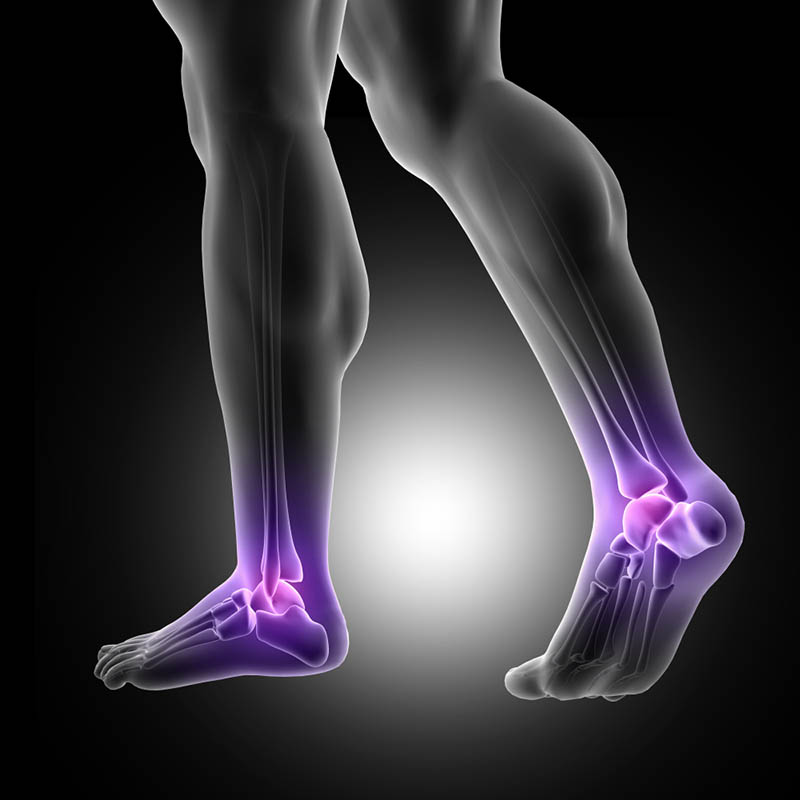A broken pinky toe might seem like a minor injury, but it can seriously impact your ability to walk, exercise, or even wear shoes comfortably. Despite its small size, the fifth toe plays a crucial role in balance and movement. Understanding the signs, risks, and treatments can help you take the right steps toward recovery, …
A broken pinky toe might seem like a minor injury, but it can seriously impact your ability to walk, exercise, or even wear shoes comfortably. Despite its small size, the fifth toe plays a crucial role in balance and movement. Understanding the signs, risks, and treatments can help you take the right steps toward recovery, especially when guided by the best podiatrist near you.
What Happens When You Break Your Pinky Toe?
A broken pinky toe is more than just a nuisance — it’s a painful setback that can affect your entire foot’s function. The fifth toe is especially prone to injury due to its exposed position and limited protection. From stubbing your toe to dropping a heavy object, the causes are often simple but the outcomes can be serious if left untreated.
Understanding Toe Fractures
A broken pinky toe occurs when one or more bones in the fifth toe crack or snap due to trauma. This can result from sudden impacts, twisting injuries, or pressure overload. It’s important to distinguish a broken pinky toe from a simple bruise or sprain, as fractures often require specific treatment for proper healing. Stress fractures, traumatic fractures, and dislocation are also possibilities that require a professional diagnosis, often confirmed through X-ray imaging.
Fractures of the toe are one of the most common lower extremity injuries that family physicians encounter. They typically result from a crushing force or axial impact, like when you accidentally stub your toe against furniture. Though these injuries often seem minor, they can significantly affect foot function and mobility.
Why the Fifth Toe Is So Vulnerable
The pinky toe sits on the outermost edge of the foot, making it the first to hit furniture corners or get squeezed in tight footwear. Whether during sports or daily activities, its exposed position increases the risk of fractures. Athletes and individuals with abnormal foot structures or deformities like bunion, calluses, or hammertoes are more susceptible to pinky toe injuries.
Common Causes of Pinky Toe Fractures
These fractures are more common than many realize. Typical causes include:
- Stubbing your toe against hard objects
- Dropping a heavy object on the foot
- Twisting missteps while walking or running
- Sports injuries, particularly in soccer, basketball, or martial arts
- Repetitive activity or overuse in certain work or exercise routines
- Direct trauma or kicking objects unexpectedly
In sports, toe fractures can occur from various types of impact and stress, each with its own level of severity and treatment needs. Active individuals should take extra caution during repetitive activities and high-impact training. These fractures can be easy to overlook but may lead to long recovery times without prompt evaluation and care.

Symptoms of a Broken Pinky Toe
Not every toe injury is a break — but certain symptoms can alert you to something more serious. Knowing the difference between a stubbed toe and a fracture can help you avoid long-term issues. This section highlights the red flags you shouldn’t ignore.
How to Tell If It’s Just a Stub or a Fracture
It’s easy to dismiss a stubbed toe, but certain symptoms may signal a fracture. Signs of a broken pinky toe include:
- Swelling or bruising that spreads to surrounding toes
- Intense pain while bearing weight
- Visibly misaligned or bent toe
- Pain lasting longer than 2–3 days
- Grinding noise, sharp pain, or popping noise during injury
- Changes in skin color, numbness or tingling, or open wounds
If you’re unsure how to treat a broken pinky toe, professional evaluation is key.
When to Seek Medical Care
You should see a podiatrist if you notice:
- Ongoing discomfort or swelling
- Inability to wear regular shoes
- Severe bruising or skin changes
- Changes in toe shape or position
- Crooked appearance, inability to bear weight, or persistent pain or swelling
Ignoring a fracture can lead to long-term stiffness or improper healing. That’s why the best podiatrist near you should be your first call.
What to Do Immediately After a Toe Injury
Early care makes a big difference in how well your pinky toe heals. Applying first aid quickly can help reduce swelling and pain, while minimizing complications. Here’s what you should do right after an injury occurs.
First Aid for Suspected Fractures
If you think you’ve broken your pinky toe, follow these first aid steps:
- Rest and avoid walking on the injured foot
- Ice the area for 15–20 minutes every few hours
- Compress with a compressive dressing or soft bandage to reduce swelling
- Elevate your foot above heart level
- Use crutches or a boot walker to limit pressure
These methods form the RICE method — the foundation of broken pinky toe treatment. It’s a crucial part of early care when learning how to treat a broken pinky toe.
Why Self-Diagnosis Can Be Risky
Pain might seem manageable, but fractures are often missed without an X-ray. Delayed or incorrect care can result in:
- Bone misalignment or deformity
- Development of chronic pain or stiffness
- Difficulty walking or wearing shoes long-term
- Risk of infection or complications like nerve damage
Seeking the best foot and ankle orthopedic surgeons near me ensures accurate diagnosis and better outcomes.

Broken Pinky Toe Treatment at Wisconsin Foot & Ankle Clinic
Your recovery begins with expert care. At Wisconsin Foot & Ankle Clinic, we provide in-office evaluations and treatment tailored to your injury. From basic care to surgical needs, our team ensures every step of your broken pinky toe treatment supports complete healing.
Evaluation and Diagnosis
At Wisconsin Foot & Ankle Clinic, our board-certified specialists start with a thorough medical history, mobility assessment, and diagnostic X-ray imaging. We check for fracture patterns, alignment issues, skin abrasions, and swelling severity to determine the best broken pinky toe treatment plan. Conditions like fractures of the fifth metatarsal or soft-tissue injuries are also considered.
Nonsurgical Management
Most broken pinky toes heal without surgery. Common treatments include:
- Buddy taping (binding the pinky toe to the adjacent one)
- Wearing a walking boot, stiff-soled shoe, or supportive footwear
- Padding to protect the area and reduce pressure
- Over-the-counter pain relief and inflammation control
- Instructions for follow-up care, including periodic x-rays and follow-up appointments
Our clinic personalizes every broken pinky toe treatment based on your lifestyle and injury.
When Surgical Care Is Considered
Surgery is rarely required but may be necessary for:
- Displaced fractures or open fracture with open wounds
- Multiple toe injuries with deformity or joint damage
- Severe injuries requiring fixation devices, realignment, or open reduction and internal fixation
If surgery is needed, our experienced team offers in-house evaluations and referrals for seamless care, along with post-surgery care and custom orthotics for optimal healing.
Recovery Timeline and Follow-Up
Healing takes time, but proper steps and consistent follow-up will help you get back on your feet. This section outlines how long recovery takes and what to expect at each stage. We’ll also highlight when additional care may be needed.
How Long Does It Take to Heal a Broken Pinky Toe?
Recovery varies depending on the severity of the fracture. Typically, healing takes 4–6 weeks, but more complex breaks may take longer. Supportive measures like plaster removal, compressive dressing, and pain relief medications can improve comfort and healing.
Returning to Work, Sports, and Daily Activities
You can usually return to light daily activities in 2–3 weeks. Sports or high-impact work may require a longer break to prevent reinjury. Tips include:
- Wearing supportive footwear or custom orthotics
- Stretching and mobility exercises guided by a podiatrist
- Avoiding barefoot walking indoors or uneven surfaces
These steps help ensure your broken pinky toe doesn’t interfere with your active life.
Signs of Improper Healing
Watch for signs like:
- Ongoing pain after 6 weeks
- Swelling that doesn’t reduce
- Red streaks, sharp pain, or snapping noise
- Crooked appearance, difficulty moving the toe, or numbness or tingling
If these symptoms appear, follow up with the best podiatrist near you for re-evaluation and updated Foot Fracture Treatment.
Local, Expert Foot Injury Care in Brookfield, Wisconsin
Expert care starts close to home. At Wisconsin Foot & Ankle Clinic, we treat everything from minor toe injuries to complex Foot Surgery in Brookfield, Wisconsin. Here’s why our clinic is trusted across the region.

Why Choose Wisconsin Foot & Ankle Clinic
We specialize in injuries like broken pinky toe and provide in-office imaging, diagnosis, and tailored care plans. Our podiatrists address everything from toe bone fractures to soft dressing application, combining comfort and results.
Your Trusted Foot Fracture Team
Led by Dr. Donald T. McDonald, our clinic is known for high-quality surgical and nonsurgical care. Whether it’s a minor break or more complex injury, we’re here to help you heal and stay active. We offer services ranging from manipulation and realignment to conservative care with supportive footwear.
Easy Access for Brookfield & Nearby Communities
We proudly serve Brookfield and surrounding areas, offering fast appointments without long wait times. If you’re searching for the best podiatrist near you, Wisconsin Foot & Ankle Clinic is your local solution.
Conclusion
A broken pinky toe isn’t just a stubbed toe — it requires care, attention, and sometimes professional support to heal correctly. At Wisconsin Foot & Ankle Clinic, we offer personalized, fast, and effective broken pinky toe treatment tailored to your needs. Don’t ignore foot pain — let our experts help you walk comfortably again.
FAQs
How do you know if you broke your pinky toe?
Look for swelling, bruising, trouble walking, and visible bending. If pain persists beyond a few days, it’s time to see a specialist.
Do I need an X-ray for a stubbed toe?
An X-ray helps rule out or confirm fractures. It’s the most reliable way to decide on the right treatment plan.
What does a broken pinky look like?
A broken pinky toe may appear swollen, purple, or bent at an odd angle. It’s often painful to the touch or when bearing weight.







